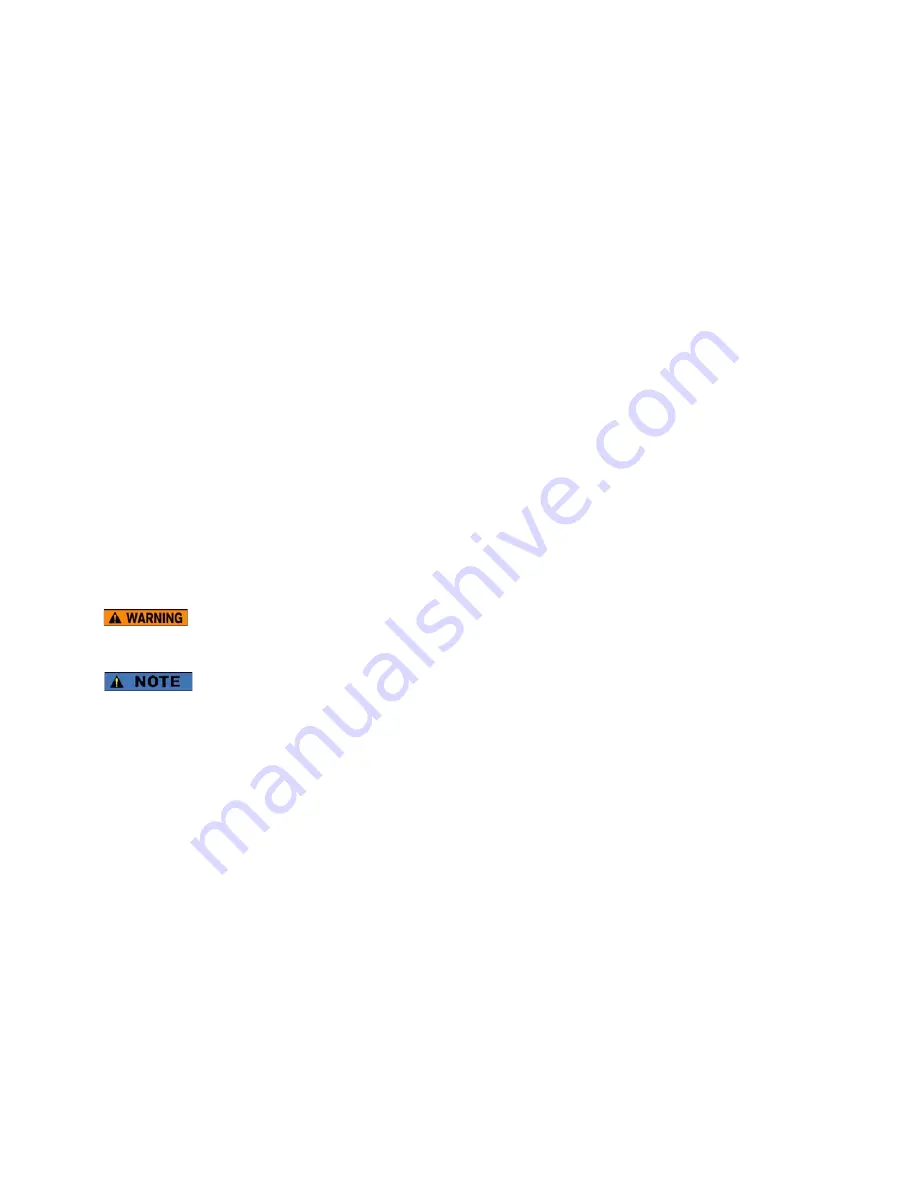
8) Ensure the transfill hose assembly bleed valve is closed by turning the knob clockwise until it
stops.
9) Slowly open the valve on the target cylinder by turning the valve handle counter-clockwise,
allowing the transfill hose to pressurize. Listen for oxygen leaks. Pause for 10 seconds then
continue slowly opening the valve all the way until it stops.
10) Slowly open the valve on the source cylinder by turning the valve handle counter-clockwise
until oxygen can be heard (and felt) to be leaving the cylinder. Immediately stop turning the
cylinder valve handle.
11) Walk away for a few minutes to allow transference to take place.
12) When the sound of oxygen leaving the source cylinder can no longer be heard (or felt), slowly
open the cylinder valve a little more until oxygen is heard to move again.
13) Walk away for a few minutes to allow transference to take place.
14) Repeat steps “10)” and “11)” as necessary until the oxygen pressure has equalized between
the cylinders (when opening the valve further will not result in gas transferring).
15) Close the valve on the target cylinder by turning the handle clockwise until it stops.
16) Close the valve on the source cylinder by turning it clockwise until it stops.
17) Open the transfill hose assembly bleed valve by turning the knob counter-clockwise to relieve
pressure from the hose.
18) Loosen the connection between the transfill hose and the target cylinder,. Remove the transfill
hose from the target cylinder.
19) Remove the transfill hose from the source cylinder.
20) Check the pressure in each cylinder using the gauge attached to the regulator. Mark cylinder
“E” (empty), “1/4”, “1/2”, or “3/4” with chalk, a sticker or a tag before storing cylinder.
3-9. OXYGEN REGULATOR ADJUSTMENT PROCEDURE
a. General.
Only personnel with the proper training and knowledge of safe oxygen handling should
attempt to adjust the oxygen regulator. Do not attempt to work with an oxygen cylinder unless
trained in cylinder handling and oxygen safety procedures.
Set regulator output pressure using oxygen only. Never put compressed air or any other gas
through any part of an oxygen system.
Regulator output pressure adjustment requires the use of the optional accessory Regulator Adjusting Kit
(part no. PC/RAK) which includes the regulator adjusting gauge assembly and wrenches.
Regulator output pressure has a direct correspondence to the pressure exerted on the regulator diaphragm
(or piston) spring. Increasing tension on the spring (tightening the adjusting screw) will increase output
pressure. Reducing tension on the spring (loosening the adjusting spring) will reduce output pressure.
b.
Regulator adjustment procedures
:
1) Attach the regulator to the oxygen cylinder.


























